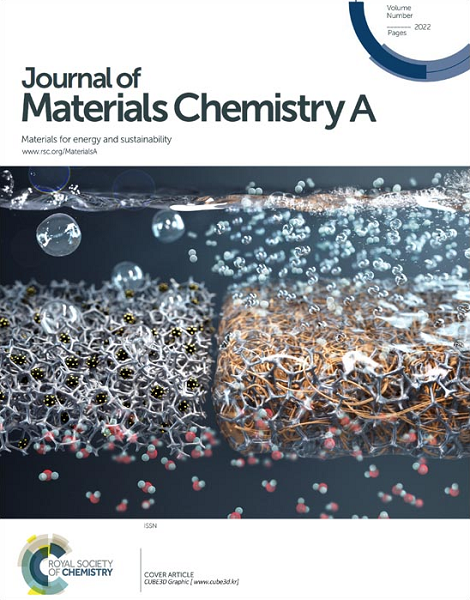Pinning and elongating of electric treeing induced by wrinkled nanosheets in polymer dielectrics towards significantly enhanced high-temperature energy storage performance
IF 10.7
2区 材料科学
Q1 CHEMISTRY, PHYSICAL
引用次数: 0
Abstract
Polymer film capacitors are key components in pulsed energy storage systems. However, at high temperatures, polymers often suffer from sharp deterioration in breakdown strength and energy storage performance. Here, pinning and elongating of breakdown paths induced by wrinkled ceramic nanosheets are proposed to enhance the high-temperature energy storage performance of polymers. The simulations show that wrinkled nanosheets can more effectively pin charge transport and elongate the breakdown path compared to flat nanosheets, yielding greatly increased breakdown time. Based on that, wrinkled alumina nanosheets (WAO) are prepared via a facile ion exchange process and then incorporated into polyetherimide (PEI) film, forming WAO/PEI nanocomposites. The composite film with merely 0.2 wt% WAO exhibits an ultrahigh energy density of 8.27 J cm−3 (efficiency > 90%) at 150 °C, which reaches 420% that of pure PEI film and is superior to most of the state-of-the-art polymer composites filled with other types of nanofillers. Meanwhile, excellent cycling stability (>50 000 cycles at 300 MV m−1) and power density (1.16 MW cm−3) at 200 °C are achieved. In addition, the novel wrinkled nanosheets are further demonstrated to be able to remarkably enhance the high-temperature energy storage performance of other polymers, including polymethyl methacrylate, polycarbonate and polyimide.

求助全文
约1分钟内获得全文
求助全文
来源期刊

Journal of Materials Chemistry A
CHEMISTRY, PHYSICAL-ENERGY & FUELS
CiteScore
19.50
自引率
5.00%
发文量
1892
审稿时长
1.5 months
期刊介绍:
The Journal of Materials Chemistry A, B & C covers a wide range of high-quality studies in the field of materials chemistry, with each section focusing on specific applications of the materials studied. Journal of Materials Chemistry A emphasizes applications in energy and sustainability, including topics such as artificial photosynthesis, batteries, and fuel cells. Journal of Materials Chemistry B focuses on applications in biology and medicine, while Journal of Materials Chemistry C covers applications in optical, magnetic, and electronic devices. Example topic areas within the scope of Journal of Materials Chemistry A include catalysis, green/sustainable materials, sensors, and water treatment, among others.
 求助内容:
求助内容: 应助结果提醒方式:
应助结果提醒方式:


